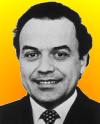
Born 3 Jun 1929.
Swiss microbiologist corecipient (with Americans Daniel Nathans and Hamilton Othanel Smith) of the 1978 Nobel Prize for Physiology or Medicine. All three were cited for their work in molecular genetics, specifically the discovery and application of restriction enzymes that break the giant molecules of deoxyribonucleic acid (DNA) into manageable pieces, small enough to be separated for individual study but large enough to retain bits of the genetic information inherent in the sequence of units that make up the original substance.
Swiss microbiologist corecipient (with Americans Daniel Nathans and Hamilton Othanel Smith) of the 1978 Nobel Prize for Physiology or Medicine. All three were cited for their work in molecular genetics, specifically the discovery and application of restriction enzymes that break the giant molecules of deoxyribonucleic acid (DNA) into manageable pieces, small enough to be separated for individual study but large enough to retain bits of the genetic information inherent in the sequence of units that make up the original substance.
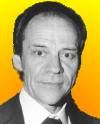
Born 3 Jun 1924.
Swedish neurobiologist, corecipient (with Americans David Hunter Hubel and Roger Wolcott Sperry) of the 1981 Nobel Prize for Physiology or Medicine. All three scientists were honoured for their investigations of brain function, Wiesel and Hubel in particular for their collaborative studies of the visual cortex, which is located in the occipital lobes of the cerebrum.
Swedish neurobiologist, corecipient (with Americans David Hunter Hubel and Roger Wolcott Sperry) of the 1981 Nobel Prize for Physiology or Medicine. All three scientists were honoured for their investigations of brain function, Wiesel and Hubel in particular for their collaborative studies of the visual cortex, which is located in the occipital lobes of the cerebrum.
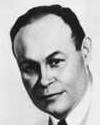
Born 3 Jun 1904; died 1 Apr 1950 at age 45. quotes
Black-American physician and surgeon who was an authority on the preservation of human blood for transfusion. He organized and directed the blood-plasma programs of the United States and Great Britain in the early years of World War II, while also agitating the authorities to stop excluding the blood of blacks from plasma-supply networks. His death resulted from a car accident.
Black-American physician and surgeon who was an authority on the preservation of human blood for transfusion. He organized and directed the blood-plasma programs of the United States and Great Britain in the early years of World War II, while also agitating the authorities to stop excluding the blood of blacks from plasma-supply networks. His death resulted from a car accident.
One Blood: The Death and Resurrection of Charles R. Drew, by Spencie Love. - book suggestion.
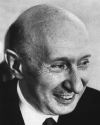
Born 3 Jun 1899; died 13 Jun 1972 at age 73. quotes
Hungarian-American physicist and physiologist who received the 1961 Nobel Prize for Physiology or Medicine for his discovery of the physical mechanism of stimulation within the cochlea by which sound is analyzed and communicated in the cochlea, a portion of the inner ear. Békésy developed anatomical techniques that allowed rapid, nondestructive dissection of the cochlea. Békésy was able to observe the traveling waves along the basilar membrane that were produced by sound. He observed the shape of these waves by stroboscopic examination of the motion of particles of silver which he sprinkled on the nearly transparent basilar membrane.
Hungarian-American physicist and physiologist who received the 1961 Nobel Prize for Physiology or Medicine for his discovery of the physical mechanism of stimulation within the cochlea by which sound is analyzed and communicated in the cochlea, a portion of the inner ear. Békésy developed anatomical techniques that allowed rapid, nondestructive dissection of the cochlea. Békésy was able to observe the traveling waves along the basilar membrane that were produced by sound. He observed the shape of these waves by stroboscopic examination of the motion of particles of silver which he sprinkled on the nearly transparent basilar membrane.
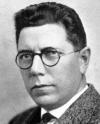
Born 3 Jun 1879; died 17 Nov 1940 at age 61.
American zoologist, one of the founders of biometry, the application of statistics to biology and medicine. Pearl was chief statistician at the Johns Hopkins Hospital (1919-35). He pioneered studies in longevity, changes in world population, and genetics. He reported in the May 1938 Scientific American that "the smoking of tobacco was associated definitely with an impairment of life duration and the amount or degree of this impairment increased as the habitual amount of smoking increased." In 1926, he first reported health benefits of moderate alcohol consumption (as opposed to both abstinence and heavy drinking) in a modern medical light.
American zoologist, one of the founders of biometry, the application of statistics to biology and medicine. Pearl was chief statistician at the Johns Hopkins Hospital (1919-35). He pioneered studies in longevity, changes in world population, and genetics. He reported in the May 1938 Scientific American that "the smoking of tobacco was associated definitely with an impairment of life duration and the amount or degree of this impairment increased as the habitual amount of smoking increased." In 1926, he first reported health benefits of moderate alcohol consumption (as opposed to both abstinence and heavy drinking) in a modern medical light.
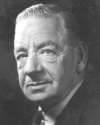
Born 3 Jun 1873; died 25 Dec 1961 at age 88. quotes
German-born American physician and pharmacologist who shared the 1936 Nobel Prize for Physiology or Medicine (with Sir Henry Dale) “for their discoveries relating to the chemical transmission of nerve impulses.” Sadly, just two years later he was a victim of Nazi persecution, imprisoned for being Jewish. As ransom for his life, he was forced to hand over his possessions, including his Nobel Prize money, and Loewi escaped to England. From there he moved to America in 1940. His research showed that it was the release of a certain chemical (the transmitter) acetylcholine, that enabled the transmission of nerve impulses. Loewi also investigated action of drugs able to blockade or assist nerve impulse transmission.«.
German-born American physician and pharmacologist who shared the 1936 Nobel Prize for Physiology or Medicine (with Sir Henry Dale) “for their discoveries relating to the chemical transmission of nerve impulses.” Sadly, just two years later he was a victim of Nazi persecution, imprisoned for being Jewish. As ransom for his life, he was forced to hand over his possessions, including his Nobel Prize money, and Loewi escaped to England. From there he moved to America in 1940. His research showed that it was the release of a certain chemical (the transmitter) acetylcholine, that enabled the transmission of nerve impulses. Loewi also investigated action of drugs able to blockade or assist nerve impulse transmission.«.
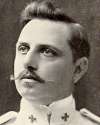
Born 3 Jun 1868; died 19 Aug 1931 at age 63.
Cuban pathologist and bacteriologist who was a member of the Reed Yellow Fever Board of the U.S. Army that discovered (1901) the role of the mosquito in the transmission of yellow fever. In May 1898, he was appointed Acting Assistant Surgeon in the U.S. Army. Agramonte had acquired immunity to yellow fever from a mild childhood case in Cuba before emigrating to the U.S., which was an advantage when he was chosen by the Surgeon-General to study the yellow fever outbreak in General Shafter's army in Cuba. There Agramonte performed autopsies in order to determine the causative agent of the disease. After additional work in Cuba, in May 1900, Agramonte was appointmented to Walter Reed's Yellow Fever Commission.
Cuban pathologist and bacteriologist who was a member of the Reed Yellow Fever Board of the U.S. Army that discovered (1901) the role of the mosquito in the transmission of yellow fever. In May 1898, he was appointed Acting Assistant Surgeon in the U.S. Army. Agramonte had acquired immunity to yellow fever from a mild childhood case in Cuba before emigrating to the U.S., which was an advantage when he was chosen by the Surgeon-General to study the yellow fever outbreak in General Shafter's army in Cuba. There Agramonte performed autopsies in order to determine the causative agent of the disease. After additional work in Cuba, in May 1900, Agramonte was appointmented to Walter Reed's Yellow Fever Commission.
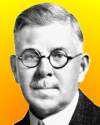
Born 3 Jun 1864; died 26 Aug 1950 at age 86.
American inventor and automobile manufacturer, designer of the three-horsepower, curved-dash Oldsmobile, the first commercially successful American-made automobile and the first to use a progressive assembly system, which foreshadowed modern mass-production methods. When young, he worked in his father's machine and repair shop, in Lansing, Mich., where he experimented with small steam engines. In 1887, for a distance of one block, Olds drove Lansing's first automobile, an experimental steam vehicle. He continued to work with steam, gasoline and electric power. Eventually he produced a gasoline-powered vehicle that seated four persons and could do 18 miles per hour on level ground.
American inventor and automobile manufacturer, designer of the three-horsepower, curved-dash Oldsmobile, the first commercially successful American-made automobile and the first to use a progressive assembly system, which foreshadowed modern mass-production methods. When young, he worked in his father's machine and repair shop, in Lansing, Mich., where he experimented with small steam engines. In 1887, for a distance of one block, Olds drove Lansing's first automobile, an experimental steam vehicle. He continued to work with steam, gasoline and electric power. Eventually he produced a gasoline-powered vehicle that seated four persons and could do 18 miles per hour on level ground.
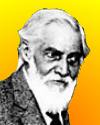
Born 3 Jun 1853; died 28 Jul 1942 at age 89.
Sir William Matthew Flinders Petrie was a British archaeologist and Egyptologist who made valuable contributions to the techniques and methods of field excavation and invented a sequence dating method that enabled reconstruction of history from the remains of ancient cultures. He studied ancient British remains at Stonehenge (1875-80), then investigated pyramids at Giza and other Egyptian antiquities (1880-1914). He developed a principle of sequence dating by potsherds (1890). In 1895, he discovered remains of a prehistoric race at Nagada (1895). The stele of Merneptah he uncovered at Thebes in 1896 contained the earliest known Egyptian reference to Israel. He wrote The Formation of the Alphabet (1912).
Sir William Matthew Flinders Petrie was a British archaeologist and Egyptologist who made valuable contributions to the techniques and methods of field excavation and invented a sequence dating method that enabled reconstruction of history from the remains of ancient cultures. He studied ancient British remains at Stonehenge (1875-80), then investigated pyramids at Giza and other Egyptian antiquities (1880-1914). He developed a principle of sequence dating by potsherds (1890). In 1895, he discovered remains of a prehistoric race at Nagada (1895). The stele of Merneptah he uncovered at Thebes in 1896 contained the earliest known Egyptian reference to Israel. He wrote The Formation of the Alphabet (1912).
Flinders Petrie: A Life in Archaeology, by Margaret S. Drower. - book suggestion.
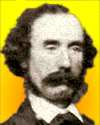
Born 3 Jun 1810; died 5 Nov 1881 at age 71.
Irish seismologist and civil engineer who began his career in partnership with his father’s factory, and within a few years became involved in great engineering projects. His first such feat was to raise the 133 ton roof of St. George’s Church in Dublin. His interests included physical geology, and he wrote numerous papers on earthquakes from 1836 to 1879. Although others before him had attributed earthquakes to vibration during the passage of earth-waves, Mallet studied them with greater detail, using the approach of an exact science. He measured the velocity of the waves through the earth’s crust, compiled a catalog of recorded earthquakes, and presented a seismic map of the world. Since he coined the term, he can truly be called the first seismologist, and father of the science.« more
Irish seismologist and civil engineer who began his career in partnership with his father’s factory, and within a few years became involved in great engineering projects. His first such feat was to raise the 133 ton roof of St. George’s Church in Dublin. His interests included physical geology, and he wrote numerous papers on earthquakes from 1836 to 1879. Although others before him had attributed earthquakes to vibration during the passage of earth-waves, Mallet studied them with greater detail, using the approach of an exact science. He measured the velocity of the waves through the earth’s crust, compiled a catalog of recorded earthquakes, and presented a seismic map of the world. Since he coined the term, he can truly be called the first seismologist, and father of the science.« more
The Founders of Seismology, by Charles Davison. - book suggestion.
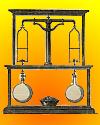
Born 3 Jun 1771; died 30 Aug 1862 at age 91.
French chemist who collaborated with Nicolas Clément (later to become his son-in-law) in scientific investigations including the exact determination of the composition of carbon monoxide and carbon disulphide. They also experimentally determined the ratio of the specific heats of gases (1819). In independent work, following up on Volta's pile, Desormes devised dry electric piles composed of metallic disks separated by a layer of salt paste (1801-04). In the period c.1812-19, with Clement, Desormes studied heat and crudely estimated absolute zero. Later in life he turned to politics, with election losses at first, but after some years leading to becoming a member of the Constituent Assembly on 23 Apr 1848.«[Image: Apparatus used by Clement and Desormes to determine the density of air.]
French chemist who collaborated with Nicolas Clément (later to become his son-in-law) in scientific investigations including the exact determination of the composition of carbon monoxide and carbon disulphide. They also experimentally determined the ratio of the specific heats of gases (1819). In independent work, following up on Volta's pile, Desormes devised dry electric piles composed of metallic disks separated by a layer of salt paste (1801-04). In the period c.1812-19, with Clement, Desormes studied heat and crudely estimated absolute zero. Later in life he turned to politics, with election losses at first, but after some years leading to becoming a member of the Constituent Assembly on 23 Apr 1848.«[Image: Apparatus used by Clement and Desormes to determine the density of air.]
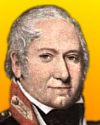
Born 3 Jun 1761; died 13 Mar 1842 at age 80.
English soldier and inventor of the Shrapnel shell, a spherical case designed to explode in midair, spreading its content of small lead musket balls to injure enemy soldiers over a wide area. He joined the Royal Artillery shortly after his 18th birthday, and spent his life in service during which time he devised and refined his shell, invented a percussion lock for small arms (patented 1834) and other improvements in fuses, ammunition and small arms. He also prepared important artillery range tables and originated the brass tangent slide to improve the sighting of guns. Incorporating his idea of the parabolic chamber, howitzers and mortars were operated more efficiently.« more
English soldier and inventor of the Shrapnel shell, a spherical case designed to explode in midair, spreading its content of small lead musket balls to injure enemy soldiers over a wide area. He joined the Royal Artillery shortly after his 18th birthday, and spent his life in service during which time he devised and refined his shell, invented a percussion lock for small arms (patented 1834) and other improvements in fuses, ammunition and small arms. He also prepared important artillery range tables and originated the brass tangent slide to improve the sighting of guns. Incorporating his idea of the parabolic chamber, howitzers and mortars were operated more efficiently.« more
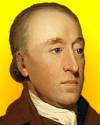
Born 3 Jun 1726; died 26 Mar 1797 at age 70. quotes
Scottish geologist who initiated the principle of uniformitarianism with his Theory of the Earth (1785). He asserted that geological processes examined in the present time explain the formation of older rocks. John Playfair effectively championed Hutton's theory. Hutton, in effect, was the founder of modern geology, replacing a belief in the role of a biblical flood forming the Earth's crust. He introduced an understanding of the action of great heat beneath the Earth's crust in fusing sedimentary rocks, and the elevation of land forms from levels below the ocean to high land in a cyclical process. Hutton established the igneous origin of granite (1788). He also had early thoughts on the evolution of animal forms and meterology.«
Scottish geologist who initiated the principle of uniformitarianism with his Theory of the Earth (1785). He asserted that geological processes examined in the present time explain the formation of older rocks. John Playfair effectively championed Hutton's theory. Hutton, in effect, was the founder of modern geology, replacing a belief in the role of a biblical flood forming the Earth's crust. He introduced an understanding of the action of great heat beneath the Earth's crust in fusing sedimentary rocks, and the elevation of land forms from levels below the ocean to high land in a cyclical process. Hutton established the igneous origin of granite (1788). He also had early thoughts on the evolution of animal forms and meterology.«
The Man Who Found Time: James Hutton and the Discovery of Earth's Antiquity, by Jack Repcheck. - book suggestion.
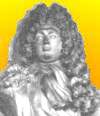
Born 3 Jun 1659; died 10 Oct 1708 at age 49.
Scottish mathematician and astronomer. In 1702 he published a book Astronomiae physicae et geometricae elementa, an effort in the popularization of Newtonian science. However, in the matter of chromatic aberration, Gregory noted something that Newton had missed. Different kinds of glass spread the colours of the spectrum by different amounts. He suggested a suitable combination of two different kinds of glass might eliminate chromatic aberration. (A half century later, Dollond accomplished this result.) Telescopes were a special interest of his, and Gregory also experimented with making an achromatic telescope. Gregory and did important work on series.
Scottish mathematician and astronomer. In 1702 he published a book Astronomiae physicae et geometricae elementa, an effort in the popularization of Newtonian science. However, in the matter of chromatic aberration, Gregory noted something that Newton had missed. Different kinds of glass spread the colours of the spectrum by different amounts. He suggested a suitable combination of two different kinds of glass might eliminate chromatic aberration. (A half century later, Dollond accomplished this result.) Telescopes were a special interest of his, and Gregory also experimented with making an achromatic telescope. Gregory and did important work on series.
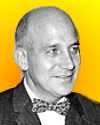
Died 3 Jun 1995 at age 76 (born 9 Apr 1919).
American engineer and inventor of the first general-purpose electronic computer, a digital machine that was the prototype for most computers in use today. In 1946, Eckert with John W. Mauchly fulfilled a government contract to build a digital computer to be used by the U.S. Army for military calculations. They named it ENIAC for Electronic Numerical Integrator and Computer. By 1949, they had started a manufacturing company for their BINAC computer. This was followed by a business oriented computer, UNIVAC (1951), which was put to many uses and spurred the growth of the computer industry. By 1966 Eckert held 85 patents, mostly for electronic inventions.
American engineer and inventor of the first general-purpose electronic computer, a digital machine that was the prototype for most computers in use today. In 1946, Eckert with John W. Mauchly fulfilled a government contract to build a digital computer to be used by the U.S. Army for military calculations. They named it ENIAC for Electronic Numerical Integrator and Computer. By 1949, they had started a manufacturing company for their BINAC computer. This was followed by a business oriented computer, UNIVAC (1951), which was put to many uses and spurred the growth of the computer industry. By 1966 Eckert held 85 patents, mostly for electronic inventions.
ENIAC: The Triumphs and Tragedies of the World's First Computer, by Scott McCartney. - book suggestion.
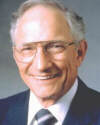
Died 3 Jun 1990 at age 62 (born 12 Dec 1927).
Robert Norton Noyce was an American engineer and inventor (1959), with Jack Kilby, of the integrated circuit, a system of interconnected transistors on a single silicon microchip. He held sixteen patents for semiconductor devices, methods, and structures. In 1968, he and colleague Gordon E. Moore cofounded N.M. Electronics, which later was renamed Intel Corporation. Noyce served as Intel's president and chairman (1968-75), then as vice chairman until 1979.
Robert Norton Noyce was an American engineer and inventor (1959), with Jack Kilby, of the integrated circuit, a system of interconnected transistors on a single silicon microchip. He held sixteen patents for semiconductor devices, methods, and structures. In 1968, he and colleague Gordon E. Moore cofounded N.M. Electronics, which later was renamed Intel Corporation. Noyce served as Intel's president and chairman (1968-75), then as vice chairman until 1979.
The Man Behind the Microchip, by Leslie Berlin. - book suggestion.
Died 3 Jun 1982 at age 64 (born 12 Mar 1918).
American inventor and business executive who was president of Panavision Inc., a company he helped found in 1953, to create a wide-screen film movie process. It manufactured and leased equipment. Panavision is an anamorphic system, using a 65mm negative and a 70mm print, projected in a letterbox shape with a 2.66 to 1 ratio. Gottschalk developed specially designed lenses used during capture and projection that worked with an image recorded on the film that is compressed horizontally. An unmodified widescreen image would occupy only half the area of a standard 1.33 to 1 film frame, wasting space above and below. Lateral compression fills the frame using an image with modified aspect ratio on the film, that retains more detail in the vertical resolution, and reduces the appearance of grain when projected. He died by murder at his home.«
American inventor and business executive who was president of Panavision Inc., a company he helped found in 1953, to create a wide-screen film movie process. It manufactured and leased equipment. Panavision is an anamorphic system, using a 65mm negative and a 70mm print, projected in a letterbox shape with a 2.66 to 1 ratio. Gottschalk developed specially designed lenses used during capture and projection that worked with an image recorded on the film that is compressed horizontally. An unmodified widescreen image would occupy only half the area of a standard 1.33 to 1 film frame, wasting space above and below. Lateral compression fills the frame using an image with modified aspect ratio on the film, that retains more detail in the vertical resolution, and reduces the appearance of grain when projected. He died by murder at his home.«
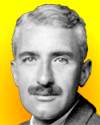
Died 3 Jun 1977 at age 90 (born 26 Sep 1886). quotes
Archibald Vivian Hill was an English physiologist and biophysicist who, for “for his discovery relating to the production of heat in the muscle,” shared (with Otto Meyerhof) the 1922 Nobel Prize for Physiology or Medicine. Hill’s research drew together physics and biology. As he pursued biophysics as a discipline, he become known as a “giant in the field of exercise physiology.” During the 1910s, Hill traced the chemical processes which provide the energy which muscles need to work. In his career, he also investigated the effects of electrical stimulation on nerve function, the mechanical efficiency of muscle, and the interaction between oxygen and hemoglobin.«
Archibald Vivian Hill was an English physiologist and biophysicist who, for “for his discovery relating to the production of heat in the muscle,” shared (with Otto Meyerhof) the 1922 Nobel Prize for Physiology or Medicine. Hill’s research drew together physics and biology. As he pursued biophysics as a discipline, he become known as a “giant in the field of exercise physiology.” During the 1910s, Hill traced the chemical processes which provide the energy which muscles need to work. In his career, he also investigated the effects of electrical stimulation on nerve function, the mechanical efficiency of muscle, and the interaction between oxygen and hemoglobin.«
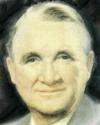
Died 3 Jun 1970 at age 77 (born 5 Mar 1893).
American founder of a water treatment company. In 1936, Emmett J. Culligan launched the Culligan Zeolite Company (Water Softening) in Northbrook, Illinois. During WW II, Culligan built a facility to manufacture silica gel, a dehydrating material that protected metals from atmospheric corrosion that was greatly in demand during the war, and Culligan soon became one of the largest suppliers. He developed a novel process for manufacturing zeolite, the man-made mineral used in water softeners, and built a nationwide service industry in water conditioning and filtering, which then expanded internationally.
American founder of a water treatment company. In 1936, Emmett J. Culligan launched the Culligan Zeolite Company (Water Softening) in Northbrook, Illinois. During WW II, Culligan built a facility to manufacture silica gel, a dehydrating material that protected metals from atmospheric corrosion that was greatly in demand during the war, and Culligan soon became one of the largest suppliers. He developed a novel process for manufacturing zeolite, the man-made mineral used in water softeners, and built a nationwide service industry in water conditioning and filtering, which then expanded internationally.
Died 3 Jun 1962 at age 94 (born 25 Oct 1867). quotes
William Ernest Castle was an American biologist and geneticist who was one of the earliest experimental geneticists. Castle’s interest in natural history began as a youth growing up on a farm. From 1897, he was a biology instructor at Harvard. He was the first to adopt a variety of the fruit fly, Drosophila, for experiments (1901-1906) because of its rapid breeding of generations. In 1901, he published the first paper in America on Mendelism. He believed Mendel’s Laws would be applicable to all animals and plants. His research used small mammals, such as guinea pigs, rats and rabbits, observing inheritance of coat colors. Castle also made a connection with Darwin’s ideas on natural selection, and showed the significance of mutations in the alteration of a species.«
William Ernest Castle was an American biologist and geneticist who was one of the earliest experimental geneticists. Castle’s interest in natural history began as a youth growing up on a farm. From 1897, he was a biology instructor at Harvard. He was the first to adopt a variety of the fruit fly, Drosophila, for experiments (1901-1906) because of its rapid breeding of generations. In 1901, he published the first paper in America on Mendelism. He believed Mendel’s Laws would be applicable to all animals and plants. His research used small mammals, such as guinea pigs, rats and rabbits, observing inheritance of coat colors. Castle also made a connection with Darwin’s ideas on natural selection, and showed the significance of mutations in the alteration of a species.«
Buried 3 Jun 1957 at age 69 (born 30 Sep 1887).
Leslie Herbert Lampitt was an English analytical chemist and food scientist who as chief chemist of Lyons founded the largest food laboratory in Europe. After WW I service, his suggestion to Samuel Gluckstein of the food company J. Lyons & Co. that science should be applied to food production was accepted. Begining in Jul 1919, he founded a 3,000 sq. ft. Bio-Chemical Department, a laboratory analyzing food samples that was the first of its kind in Europe. As the staff and activity grew, by 1928, the lab had 35,000 sq.ft. in a new seven-story building. In Jun 1949, Oxford graduate Margaret Roberts joined as a research chemist, but later as Margaret Thatcher, she became Britain's first woman Prime Minister. Lampitt was active in several chemistry societies, both academic and industrial. He advocated standards for such products as tea, coffee, jam, cream and cheese.«
Leslie Herbert Lampitt was an English analytical chemist and food scientist who as chief chemist of Lyons founded the largest food laboratory in Europe. After WW I service, his suggestion to Samuel Gluckstein of the food company J. Lyons & Co. that science should be applied to food production was accepted. Begining in Jul 1919, he founded a 3,000 sq. ft. Bio-Chemical Department, a laboratory analyzing food samples that was the first of its kind in Europe. As the staff and activity grew, by 1928, the lab had 35,000 sq.ft. in a new seven-story building. In Jun 1949, Oxford graduate Margaret Roberts joined as a research chemist, but later as Margaret Thatcher, she became Britain's first woman Prime Minister. Lampitt was active in several chemistry societies, both academic and industrial. He advocated standards for such products as tea, coffee, jam, cream and cheese.«
Laboratory Organisation, by Leslie Herbert Lampitt. - book suggestion.
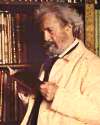
Died 3 Jun 1925 at age 83 (born 26 Feb 1842). quotes
Nicolas Camille Flammarion was a French astronomer who studied double and multiple stars, the moon and Mars. He is best known as the author of popular, lavishly illustrated, books on astronomy, including Popular Astronomy (1880) and The Atmosphere (1871). In 1873, Flammarion (wrongly) attributed the red color of Mars to vegetation when he wrote “May we attribute to the color of the herbage and plants which no doubt clothe the plains of Mars, the characteristic hue of that planet...” He supported the idea of canals on Mars, and intelligent life, perhaps more advanced than earth's. Flammarion reported changes in one of the craters of the moon, which he attributed to growth of vegetation. He also wrote novels, and late in life he turned to psychic research. more
Nicolas Camille Flammarion was a French astronomer who studied double and multiple stars, the moon and Mars. He is best known as the author of popular, lavishly illustrated, books on astronomy, including Popular Astronomy (1880) and The Atmosphere (1871). In 1873, Flammarion (wrongly) attributed the red color of Mars to vegetation when he wrote “May we attribute to the color of the herbage and plants which no doubt clothe the plains of Mars, the characteristic hue of that planet...” He supported the idea of canals on Mars, and intelligent life, perhaps more advanced than earth's. Flammarion reported changes in one of the craters of the moon, which he attributed to growth of vegetation. He also wrote novels, and late in life he turned to psychic research. more
The Flammarion Book of Astronomy, by Camille Flammarion. - book suggestion.
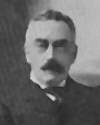
Died 3 Jun 1919 at age 74 (born 17 Dec 1844).
U.S. mycologist and plant pathologist who developed cryptogamic botany in the U.S. with pioneer investigations in plant pathology. His course in this subject was the first taught in the United States. Farlow's publications were mainly on taxonomic and bibliographic phases of mycology, (the study of fungi), but he also wrote articles on algae, lichens, and ferns. From Summer 1872 to1874 while in Europe for further training, he established contacts, bought books, periodicals and specimens. His extensive library and collections of fungi, algae, lichens, and mosses became the nucleus of Harvard University's Farlow Research Library and herbarium, bequeathed in 1919, to meet the need for a complete reference library to establish relationships.
U.S. mycologist and plant pathologist who developed cryptogamic botany in the U.S. with pioneer investigations in plant pathology. His course in this subject was the first taught in the United States. Farlow's publications were mainly on taxonomic and bibliographic phases of mycology, (the study of fungi), but he also wrote articles on algae, lichens, and ferns. From Summer 1872 to1874 while in Europe for further training, he established contacts, bought books, periodicals and specimens. His extensive library and collections of fungi, algae, lichens, and mosses became the nucleus of Harvard University's Farlow Research Library and herbarium, bequeathed in 1919, to meet the need for a complete reference library to establish relationships.
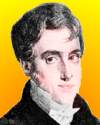
(EB)
Died 3 Jun 1841 (born c. 1750).
Nicolas-François Appert was a French inventor, chef, confectioner and distiller who invented the method of preserving food by enclosing it in hermetically sealed containers. Inspired by the French Directory's offer of a prize for a way to conserve food for transport, Appert began a 14-year period of experimentation in 1795. Using corked-glass containers reinforced with wire and sealing wax and kept in boiling water for varying lengths of time, he preserved soups, fruits, vegetables, juices, dairy products, marmalades, jellies, and syrups.
Nicolas-François Appert was a French inventor, chef, confectioner and distiller who invented the method of preserving food by enclosing it in hermetically sealed containers. Inspired by the French Directory's offer of a prize for a way to conserve food for transport, Appert began a 14-year period of experimentation in 1795. Using corked-glass containers reinforced with wire and sealing wax and kept in boiling water for varying lengths of time, he preserved soups, fruits, vegetables, juices, dairy products, marmalades, jellies, and syrups.
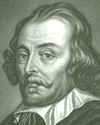
Died 3 Jun 1657 at age 79 (born 1 Apr 1578). quotes
English physician who discovered the true nature of the circulation of the blood and of the function of the heart as a pump. Functional knowledge of the heart and the circulation had remained almost at a standstill ever since the time of the Greco-Roman physician Galen, 1,400 years earlier. Harvey’s courage, penetrating intelligence, and precise methods were to set the pattern for research in biology and other sciences for succeeding generations, so that he shares with William Gilbert, investigator of the magnet, the credit for initiating accurate experimental research throughout the world. more
English physician who discovered the true nature of the circulation of the blood and of the function of the heart as a pump. Functional knowledge of the heart and the circulation had remained almost at a standstill ever since the time of the Greco-Roman physician Galen, 1,400 years earlier. Harvey’s courage, penetrating intelligence, and precise methods were to set the pattern for research in biology and other sciences for succeeding generations, so that he shares with William Gilbert, investigator of the magnet, the credit for initiating accurate experimental research throughout the world. more
On the Motion of the Heart and Blood in Animals, by William Harvey, Robert Willis (Translator). - book suggestion.
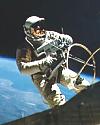
In 1965, the first American astronaut to make a spacewalk was Major Edward White II, when he spent 20 minutes outside the Gemini 4 capsule during Earth orbit at an altitude of 120 miles. A tether and 25 foot airline were wrapped in gold tape to form a single, thick cord. He used a hand-held 7.5 pound oxygen jet propulsion gun to maneuver. The launch had taken place a few hours earlier on the same day. During the remainder of the flight, pilot White and his crewmate commander McDivitt completed 12 scientific and medical experiments. The total time in orbit was almost 98 hours, making 62 orbits. Soviet cosmonaut Aleksei A. Leonov, had made the first ever spacewalk for 10 minutes about three months earlier.
In 1948, the 200-inch (5.08 m) reflecting Hale telescope at the Palomar Mountain Observatory in California was dedicated. This was the first in the world with a 200-inch lens, which after casting was permitted to cool slowly over an 11 month period. The resulting 20-ton glass disk then required years years of careful grinding and polishing, interrupted by WW II. The telescope was officially named after Dr. George Ellery Hale who conceived, designed and promoted this telescope, though he died before it was completed. On 1 Feb 1949, studies first began with observations were first made of the constellation Coma Berenices.
Explorer of the Universe: A Biography of George Ellery Hale, by Helen Wright. - book suggestion.

Rutherford
In 1920, Ernest Rutherford speculated on the possible existence and properties of the neutron in his second Bakerian Lecture, London, on “The Nuclear Constitution of Atoms.” He considered isotopes for which “…provided the resultant nuclear charge is the same, a number of possible stable modes of combination of the different units which make up a complex nucleus may be possible.” Later he said, “Under some conditions, however, it may be possible for an electron to combine much more closely with the H nucleus, forming a kind of neutral doublet. Such an atom would have very novel properties. Its external field would be practically zero, except very close to the nucleus…” In 1932, Chadwick discovered the neutron.«
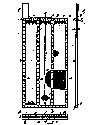
In 1902, Thomas A. Edison received a patent for a "Reversible Galvanic Battery" (U.S. No. 701,804). Such battery used insoluble active elements in an alkaline solution which remained unchanged during all conditions of use, such that a battery is made of great permanence and of remarkably light weight per unit of power. He had experimented and found nickel which he described as a suitable component for the battery.

In 1898, the first paid Marconigrams were sent by Lord Kelvin, from the Isle of Wight to several friends, including Sir George Stokes. As recalled by Guglilelmo Marconi, writing in 1902, Kelvin, with Lord Tennyson, was visiting the Alum Bay station at The Needles, where Marconi explained the apparatus for his “etheric wave telegraphy.” Kelvin was “so much pleased with what he saw that he desired to send telegrams to various friends on the mainland of England, insisting first that he be permitted to pay for their transmission to Bournemouth at the rate of a shilling royalty per message in order to show his appreciation of the system and to illustrate its immediate availability for commercial use.” Tennyson also sent a message to his nephew at Eton, saying, “very sorry not to hear you speak your Thackery to-morrow.«
more
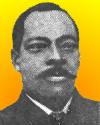
In 1884, Granville T. Woods - the prolific black American inventor - was issued his first patent. This covered his innovation for a “Steam Boiler Furnace” (U.S. No. 299,894). He continued inventing for over 20 more years and received several dozen more patents, many of which were related to railroad equipment controls and communication. Woods also patented an egg incubator for 50,000 eggs. Perhaps his most important invention was the “Synchronous Multiplex Railway Telegraph” (1887) which he designed for the purpose of making rail travel safer. It averted accidents by keeping each train informed of the whereabouts of the one immediately ahead or following it, and in communicating with the stations from moving trains.
Black Inventors in the Age of Segregation, by Rayvon Fouche. - book suggestion.
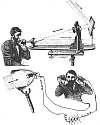
In 1880, Alexander Graham Bell transmitted the first wireless telephone message on his newly-invented photophone. The photophone worked by projecting his voice through an instrument towards a mirror. The vibrations in the voice caused similar vibrations in the mirror. Bell directed sunlight into the mirror, which captured and projected the mirror's vibrations. The vibrations could be deconstructed back into sound at the receiving end of the projection. In this way the photophone functioned similarly to the telephone; the difference was that the photophone used light as a means for projecting the information, while the telephone used electricity.

In 1875, Alexander Bell used his "harmonic telegraph" to transmit a twanging sound from a reed vibrated by Bell's voice along wires to Watson. Although the instrument transmitted voicelike sounds, the words were not recognizable. Now he knew he was closer to his dream of speech transmission. The striking result on this day came after more tinkering on the instrument, after a simple discovery the previous day. On 2 Jun 1875, the two had been workingon the telegraph. In the transmitter room, Watson was trying to free a reed wound too tightly to the pole of its electromagnet, when it produced a twang. Bell, at work in the receiving room heard the twang and realized the complex overtones and timbre shared characteristics with voice vibrations.[Image: diagram of earlier device under test in Winter 1873]

In 1859, T.H. Huxley presented his first public defence of Charles Darwin’s theory. He delivered his paper, 'On the Persistent Types of Animal Life', at the Royal Institution. Huxley discussed the difficulties in understanding relationships between organisms seen in fossil forms and the present day. “The gradual modification of pre-existing species” outlined in Darwin’s theory best explained the facts discovered by paleontologists. “Of some two hundred known orders of plants, not one is exclusively fossil. Among animals, there is not a single totally extinct class.” Darwin acknowledged Huxley’s support in the 'Historic Sketch' which prefaced his famous book, The Origin of Species.
more
Thomas Henry Huxley: The Evolution of a Scientist, by Sherrie L. Lyons. - book suggestion.
In 1856, Cullen Whipple, of Providence, RI, patented a screw-blank feeder mechanism (U.S. No. 15,052). In Oct 1840, he was one of ten incorporators of The New England Screw Co. He invented a machine for the company to use cutting the threads of screws (patented 18 Aug 1842) which he later improved by adding more cutters to also point the screws in the same machine (patent No. 9,477, 14 Dec 1852). He patented various other devices for improving the manufacture of screws. He has been credited* as the inventor of the first practical machine for pointing screws. Early screws had no point and required that a starter hole be drilled before use.«[Note: Famous First Facts by Joseph Nathan Kane incorrectly cites this screw-blank feeder mechanism's 3 Jun 1856 date and patent number as the first practical screw-pointing machine patent. In fact, Whipple invented his screw pointing machine four years earlier - in 1852.] more





